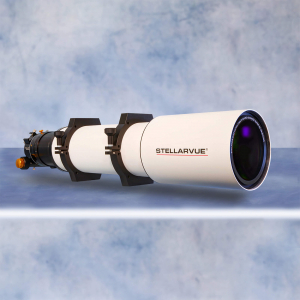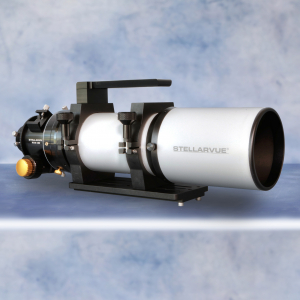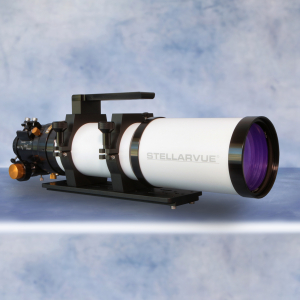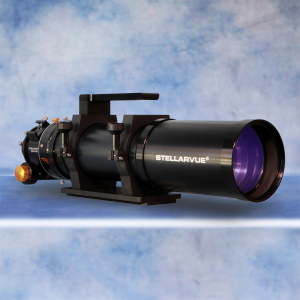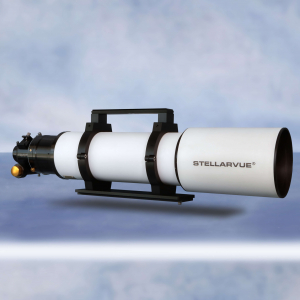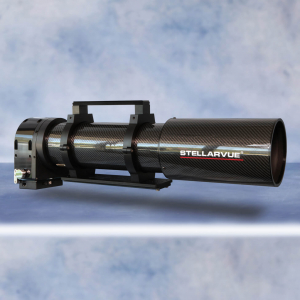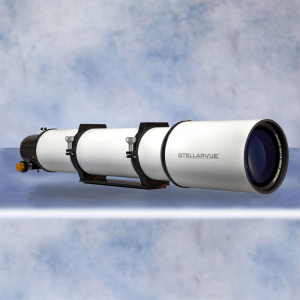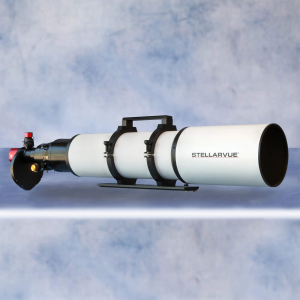
New To Astronomy
Optical Glass Types
By Vic Maris
Customers often ask about glass type. This page briefly describes the history of refractor glass, the basic differences between the most commonly-used glass types, and what is really important in terms of performance.
Let's start at the beginning...
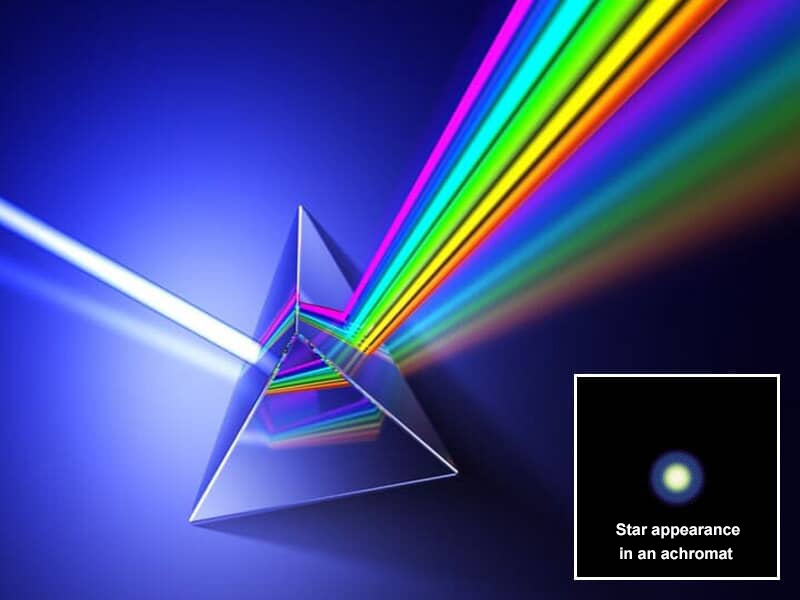
In 1609, Galileo first used a telescope with a simple, one-element
objective. A simple lens like this acts like a prism, dispersing the colors that make up white light and therefore showing much false color.
In 1668, Isaac Newton invented the reflecting telescope, which uses mirrors instead of lenses. At the time, Newton incorrectly believed that refractors would always have false color.
In the early 1700s, Chester Moore Hall believed it was possible to combine different glasses to reduce false color. He combined a crown glass lens with a flint glass lens, making a two-element objective lens, which eliminated some of the false color. This new type of objective lens was called an achromat meaning "no color". While two conventional glasses can reduce color, they do not get rid of it entirely (see the achromat star inset on the right).
Ernst Abbe, head of the Zeiss company, developed the first truly color-free lens in 1868. It was a microscope lens that used the standard optical glasses available at that time and required 10 elements.
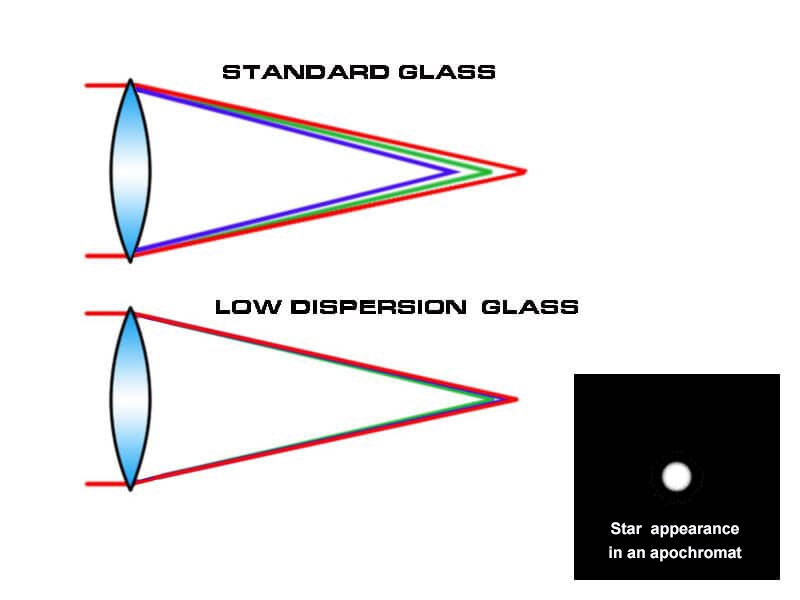
Improvements in technology over time resulted in new (and expensive) types of glass, including low-dispersion glass
This type of glass disperses less color than standard glass, as illustrated to the left. Since the colors are closer together, fewer elements are needed to make a color-free telescope.Telescopes that are truly color free are called apochromatic telescopes or apos. An apo using extra-low or super-low dispersion glass can be made with as few as two or three elements.
To determine if a telescope is apochromatic, the objective must focus three different colors in the same spot, and optical defects (spherical aberration and coma) must be corrected in two different places on the visual spectrum. Telescopes that have noticeable spherical aberration are not apos.
Let's now compare glass types using their approximate measure of color dispersion known as the Abbe number. The higher the number, the lower the color dispersion.
In this chart, standard glass is shown on the far left. Next to it are two commonly used extra-low dispersion (ED) glasses. The four glass types on the far right are super-low dispersion (SD) glasses with a similar Abbe number.If a telescope optic is well designed and is accurately figured, we can make the following generalizations: achromatic refractors (doublets) using standard glass will have noticeable false color. ED refractors using one extra low dispersion glass will have much better color correction. SD refractors using one super low dispersion glass will have the best color correction and highest contrast of the three.
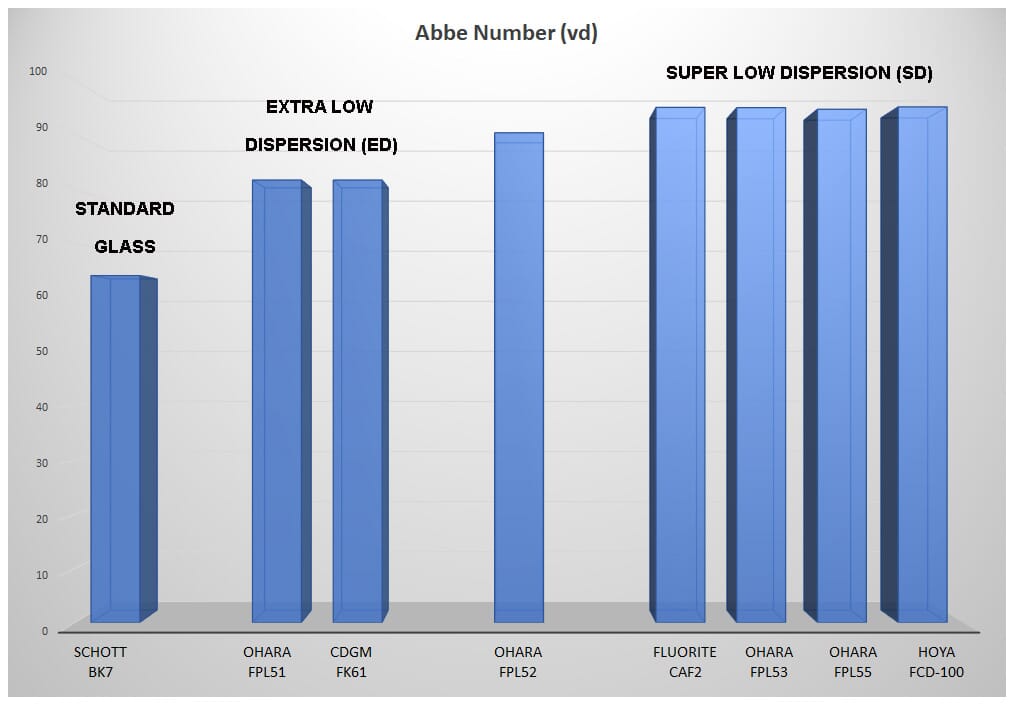
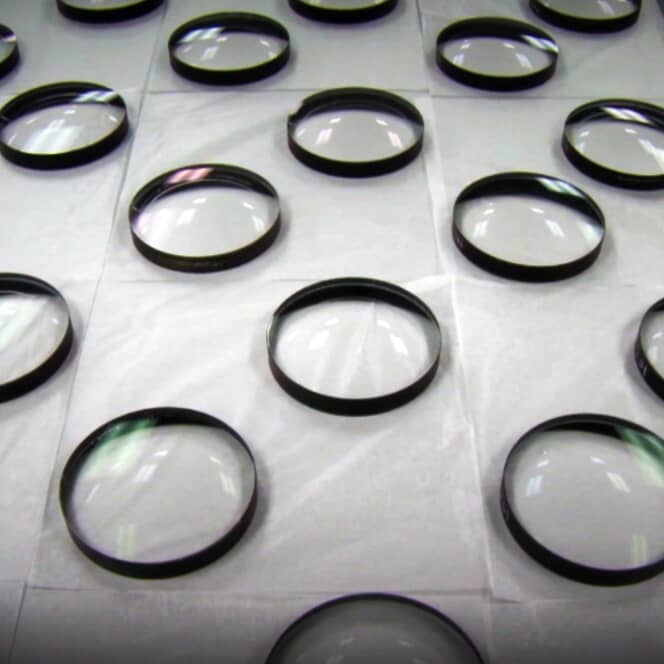
Vic Maris discusses Ohara S-FPL53 versus Ohara S-FPL55 versus Hoya FCD100
"Eight years ago, I was skeptical of the relatively new Hoya FCD100. My more recent experience has shown me that FCD100, Ohara FPL53 and FPL55 are equivalent. Here is how I determined this:Our best doublets were once made with Russian OK4 glass, which is similar to Ohara FPL52 (which is now discontinued). When we mated the OK4 with a Lanthanum element our customers noted it had exceptional color correction. Many referred to this lens humorously as, 'the doublet that thinks it's a triplet.' About seven years ago, I decided to take it a step further, so we introduced doublets made with FPL53 and Lanthanum. We then switched from FPL53 to FCD100. We sold hundreds of these FCD doublets in three different sizes (80 mm, 102 mm and 125 mm). The telescopes made with FPL53 and FCD100 performed exactly the same. So, we realized that these two glasses performed identically.
We produced SVX130T refractors in 2020 with FCD100. Performance (visually and photographically) was identical to those made with FPL53. Based on this experience, I realized that it is ridiculous for people to insist on FPL53 over FCD100.
Over the past 2 1/2 decades we have made 130 mm apochromats with a lot of different glass types including Russian OK4, Schott FK51, Ohara FPL51 and its equivalents, Ohara FPL53, FPL55 and FCD100. The highest contrast and most consistent performance was obtained with the last three glass types mated with a borosilicate crown element in the front and a lanthanum element in the rear specifically matched to the SD glass used. These are now the only SD glasses we use in making our SVX apochromatic refractors."
Glass type is not the most important thing.
Over the past two decades, we have learned which optical glasses are the best by producing thousands of telescopes, measuring their accuracy, and communicating with thousands of customers. The main problems with mass-produced optics are inconsistent optical accuracy and noticeable aberrations (spherical error, astigmatism, coma, and trefoil).In 2018, we brought optical figuring in-house and began the long process of reducing aberrations seen on machine-polished lenses. Refractors with a model number that starts with SV were made prior to our in-house, hand-figuring. Refractors with a model number that starts with SVX were hand-figured in our shop. Our SVX refractors have the most accurate and consistent optics we have ever produced.
Stellarvue has also transitioned into the realm of CMOS cameras, with optics designed and figured to take full advantage of new technology.
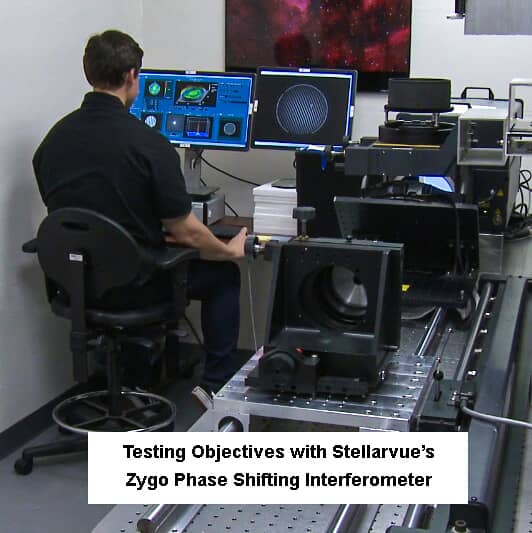
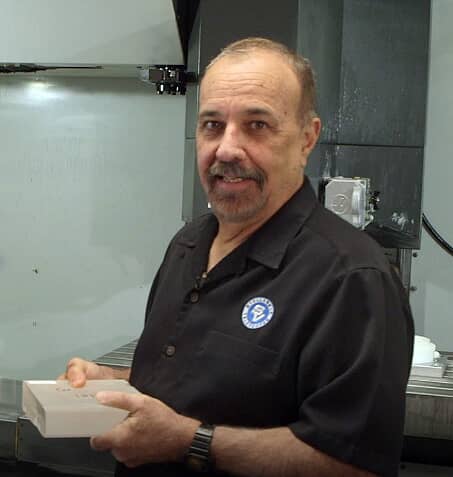
"I hope that by sharing my experiences over the last 27 years, I can help my customers make a more informed decision."
—Vic Maris, President
Stellarvue Inc.
January, 2021







